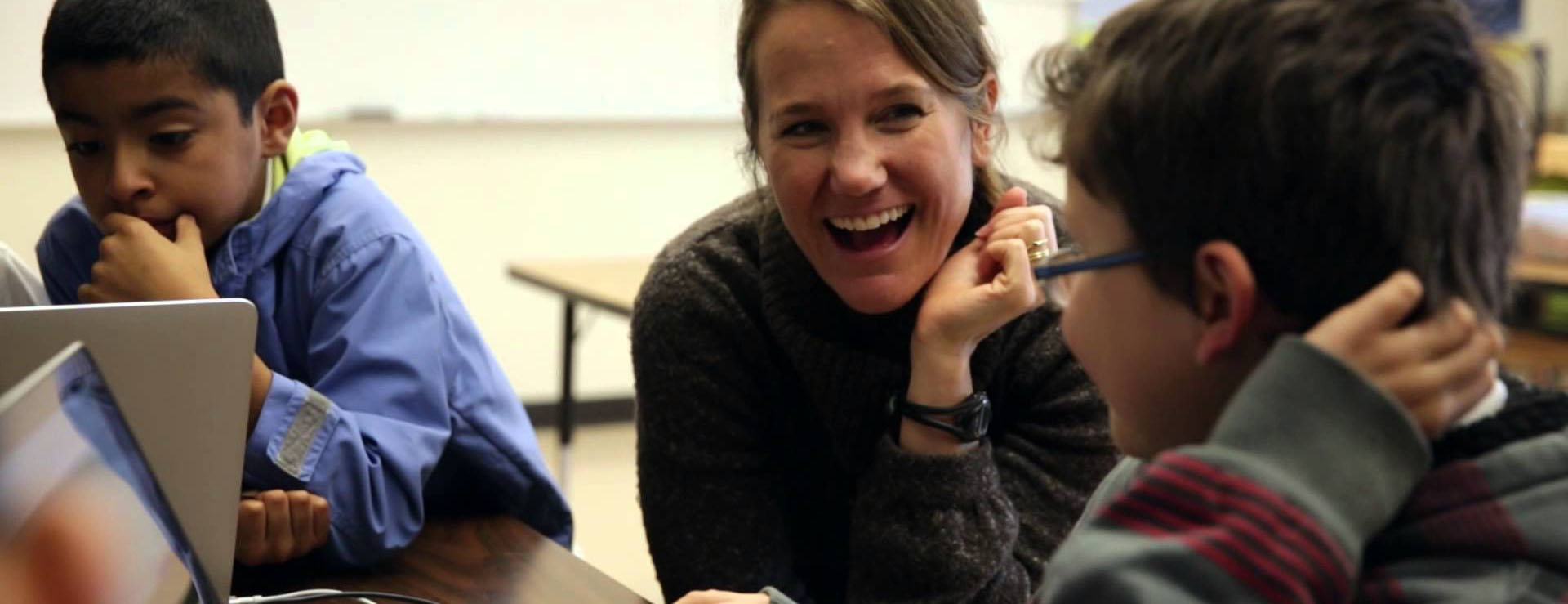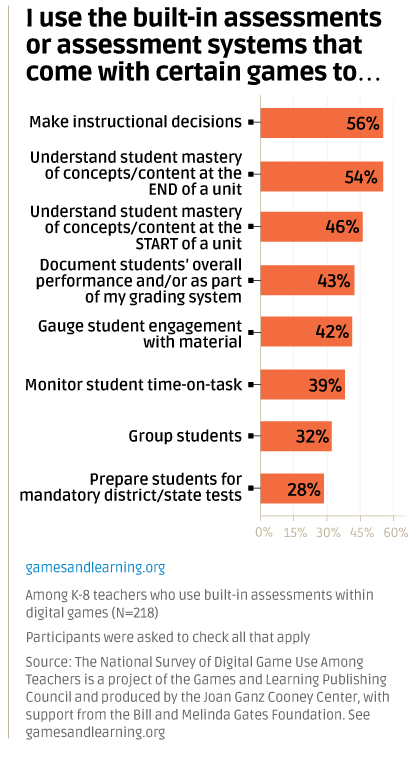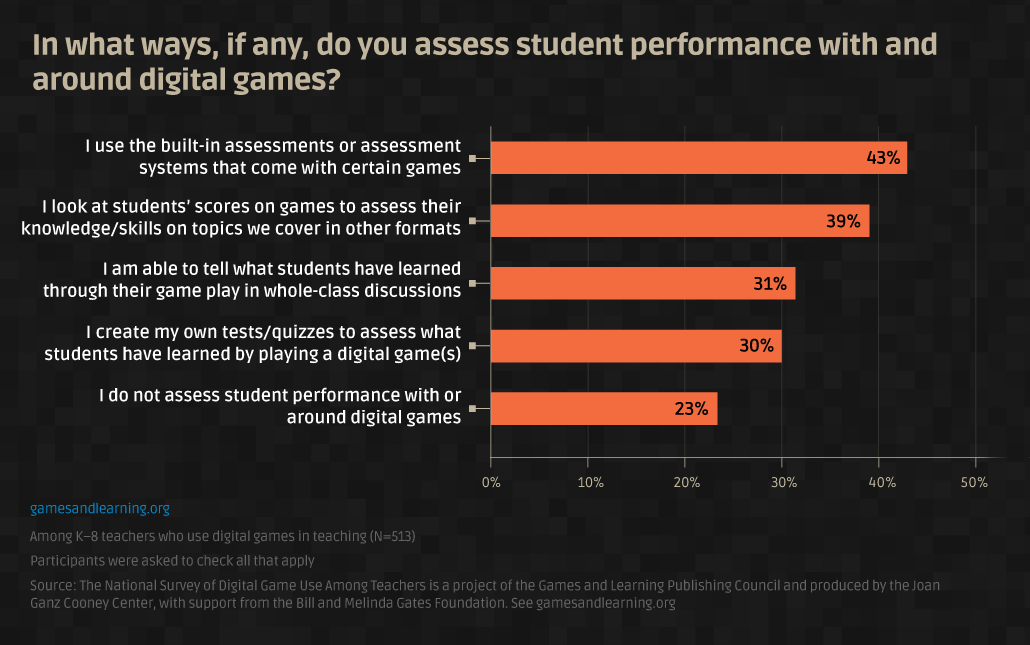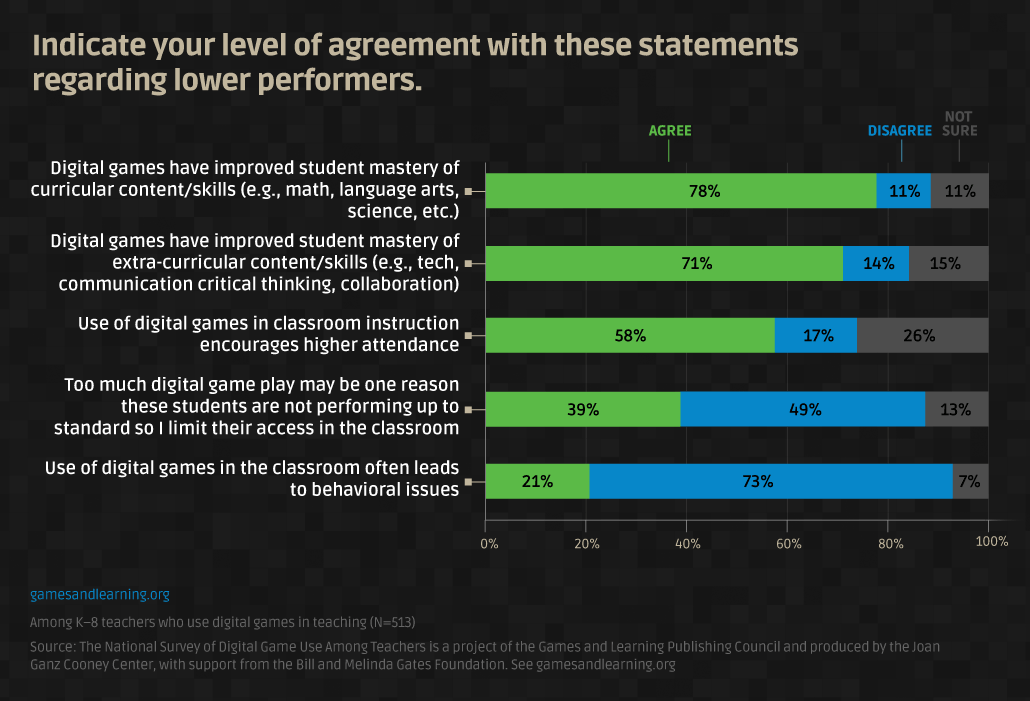
Introduction
The growth in using digital games in the classroom comes as many educators and administrators are also looking for new ways to gauge student understanding and mastery of issues – generally called assessment. In the second of three reports on the views of teachers, a Games and Learning Publishing Council survey points out that more educators are using games to collect data on student behavior and performance and see real benefit especially in aiding lower-performing students.
The results are an initial look at a far larger analysis of the state of video and other digital games in the classroom that will be released in late summer 2014.
Games and the Core
For many teachers, digital games remain a tool, like a textbook, aimed at delivering content. Although many educators stress the engaging and effective nature of games to deliver this content, it is still less about gauging student understanding of the subject as a different form of lesson.
In the GLPC survey, teachers who used games in the classroom said they were more likely to use them to cover material not mandated by any standard (45 percent) or lessons required by local (43 percent) or state (41 percent) standards.
When it comes to assessing student knowledge, fewer teachers report using digital games to help understand their students knowledge.
Developers point out that it makes sense that games are increasingly seen as part of the curriculum and not so separate from it.
Games started as a way to engage students who were disengaged, but as they’ve gone mainstream … nobody questions the use of the word game any more, nobody questions whether games have a role in education any more all the debate now is what’s the role and how do we take advantage of it? Assessment’s a massive part of that discussion. Games give us the ability to bring these higher-level thinking, complex activities into that realm of what we can measure.
Dave McCool, CEO and Founder, Muzzy Lane
In the critical area of standards-based knowledge only 29 percent report using digital games to monitor students’ learning during the game or lesson (what is called formative assessment). These gauges are often used by the game or the teacher to tailor lessons and reiterate points students are struggling with.
Even fewer, only 17 percent, use games as a form of summative assessment. These assessments are used to measure student learning at the end of a lesson or curriculum unit. Think of them as the mid-term test or major paper.
The Assessment Question

For those designers considering whether to include assessment tools in their digital games, though, the question remains: will teachers use it?
The survey indicates that teachers increasingly will.
Fully 43 percent of teachers using games in the classroom report using the built-in assessments that come with games. That said, interestingly, almost a quarter of the teachers report not assessing student performance connected to a digital game in any way.
The survey went one step further, though, diving into that 43 percent that use built-in assessments to find out what they do with that information.
The majority of those teachers use what they learn from the games to modify their teaching, choosing to emphasize areas where students struggled and condensing material that they already understand.
That garnered some skepticism from developers who have worked closely with teachers and assessment data. Jessica Lindl, whose group GlassLab has created some of the most intensive assessment engines connected to any game, said she thought the numbers reflected a misunderstanding by some teachers about the kind of information they get from games.
What we have seen is dramatically different to the point that when we launched SimCityEDU we sort of walked away saying we have to totally rethink this and then invested a lot in reworking the dashboard for assessment data. We are seeing more teachers look at it, but nothing near 50 percent. …. I worry some teachers may be looking at game-play data and think they are looking at assessment data, but the two are different.
Jessica Lindl, General Manager, GlassLab
Many teachers also use the games’ assessments to benchmark where students are before or at the end of a lesson.
Interestingly, far fewer use the games’ tools to police their students with only 39 percent saying they use the assessments to ensure students are staying on the assignment.
Help for Struggling Students
As our previous release of data indicated, many teachers see digital games as particularly helping lower performing students who struggle in traditional classrooms.
When asked about those students who struggle in class and whether games demonstrated improvement they can assess, the numbers are impressive.
Almost 80 percent reported that the games improved the students’ understanding of the core curriculum and more than 70 percent said it boosted student understanding of so-called non-cognitive skills like cooperation and collaboration.
Low-performing students are often relegated to endless skill-building games and programs that don’t engage them or yield positive outcomes. Years of experience show us that when the same students are given the opportunity to play learning games that require critical thinking about real-world issues, they make amazing gains—for example reversing the summer slide by gaining five months in reading, and making the connection between school, work, and their futures.
Lisa Holton, president, Classroom, Inc.
Additionally, teachers reported these lower-performing students were more likely to attend class (58 percent) and, almost as importantly, the vast majority (73 percent) said the games did not lead to behavioral problems in class.
Methods
This survey was designed by the Joan Ganz Cooney Center and was fielded during a three-week period in Fall 2013 by VeraQuest, who recruited respondents from the uSamp online survey panel. The panel has over 2 million members in the U.S. who have been recruited through a number of different panel enrollment campaigns, and panelists are required to double opt-in to ensure voluntary participation in the surveys they are invited to complete. Adult respondents were randomly selected from a targeted uSamp panel of k-8 classroom teachers to be generally proportional of the demographic strata of total U.S. teachers. Once selected, respondents were invited to a protected web-based survey which ensured that only the intended recipient could complete the survey, which could be completed only once. There were 694 respondents from the U.S. who reported being classroom/specialist k-8 teachers who completed the survey.
Statistical testing completed at 90% confidence level where appropriate. In some instances percentages may not add to 100% due to rounding.
Photo Credit
The photo at the top of this page is from GlassLab and features general manager Jessica Lindl working with students as part of the SimCityEDU project.



